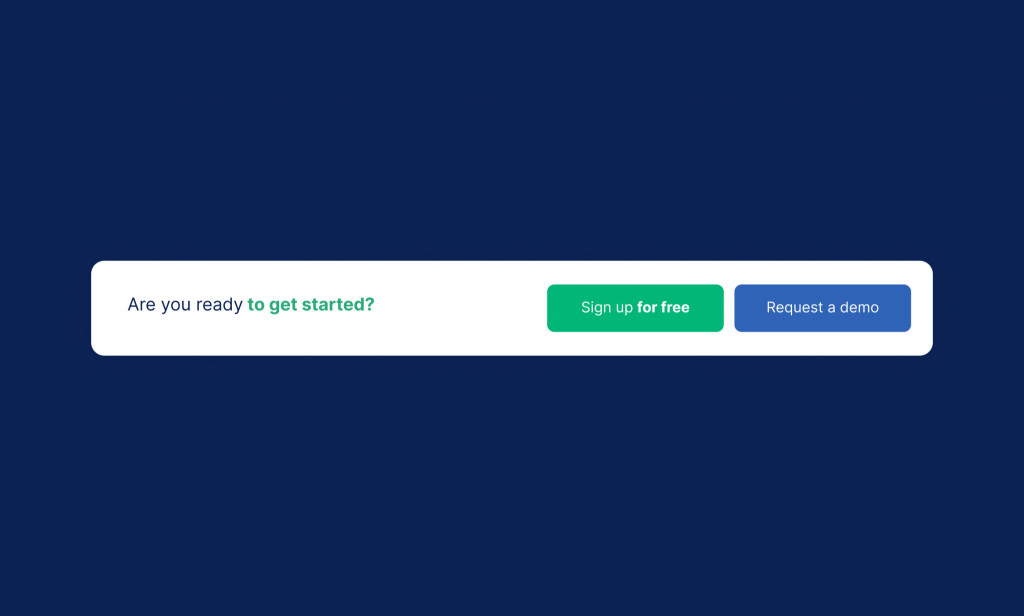What Call To Action Should You Use On Your Website

Getting your call to action right can make or break your marketing campaign. It tells your customers exactly what they need to do to interact with your business and will therefore directly impact your conversion rates.
What is a call to action?
In advertising, communication, or websites, a call to action (CTA) is a piece of content intended to encourage the audience to perform a specific action. Calls to action help businesses convert site visitors and readers into sales leads and can drive a variety of different actions.
What call to action should you use?
What call to action you use will depend on the type of business you have. Think carefully about your business goals, who your customers are, and how you want them to interact with you. Be clear, informative and motivating!
A good call to action will tell your visitors and readers exactly what you want them to do next. For example, when we run seminars on how to build your own website, we want our attendees to sign up to our platform and build their own websites so our call to action will encourage them to sign up.
We often see a lot of websites that have great content but don’t include a call to action at the bottom. You need to guide the potential customer on what to do next otherwise you risk losing them.
Take a look at the examples below to get started…
1. Buy now
If your business is centered around eCommerce or has options to buy online as well as in-store, a call to action based on purchasing a product is an excellent choice. Depending on what emotion you would like to evoke, you can use variations such as “treat yourself today” for a more personal touch, or “grab it today” to create a sense of urgency. A great example is “Buy now and save £40” as it tells them to buy straight away and provides an incentive to save money.
2. Get a quote
This call to action is perfect for a wide range of businesses, from tradesmen to those selling IT hardware. If the price of your services can vary depending on the project, this is a great call to action to use. It makes it easy for a customer to engage with your services and obtain information specific to their needs. A strong example is “See how much money you could save on your business insurance, get a free quote today”.
3. Enquire
Similar to the “get a quote” call to action, enquire is perfect if your prices can vary or if your services are often uniquely tailored to your customers. Using an “enquire” call to action is a great way to encourage customers to find out more about your business and what you offer in a relaxed way. As with “get a quote”, you need to give them a reason to enquire or request a quote and that is generally that they have read what you do and need that service/product. This is a good example of an enquire call to action; “Ready to make the management of your fleet more productive? Request a call back”.
4. Sign up
This is a strong call to action to use if you offer an online service (like us at Pagio Website Builder!) and/or want customers to create an account with you. Motivating phrases such as, “Are you ready to get started?” or “Start your journey now”, are enticing whilst providing clear direction on what action your customers need to take. As with the example in the enquire call to action above, we could easily use this as an example; “Ready to get a website that attracts visitors and converts them to customers? Sign up for free”.
5. Subscribe
Are you a blogger seeking to promote your latest stories? Maybe you just want to promote your new email marketing campaigns? A call to action based on “subscribing” is an excellent way to do this. You can use emotive language like “join our community” to make viewers feel like they’re part of something bigger. Don’t forget to give them a reason or incentive as to why they should subscribe. For example, “Subscribe to enjoy free marketing tips sent directly to your inbox each week.”
For both “sign up” and “subscribe” calls to action, don’t forget to include when it is free. A lot of people hesitate to sign up for new services because they are afraid of incurring hidden costs. Including the word free in your call to action is a simple way of reassuring viewers that there is nothing to fear, which will encourage them to sign up.
Final thoughts
We hope this post has helped you to write or improve your calls to action but if you’re still wrestling with your writing and need help with your copy, you can contact us here to find out more about our services.
Need a professional website that is easy to manage?
Sign up or book a free 30 minute website consultation with one of our team who can demo Pagio Website Builder and answer any questions you have.
